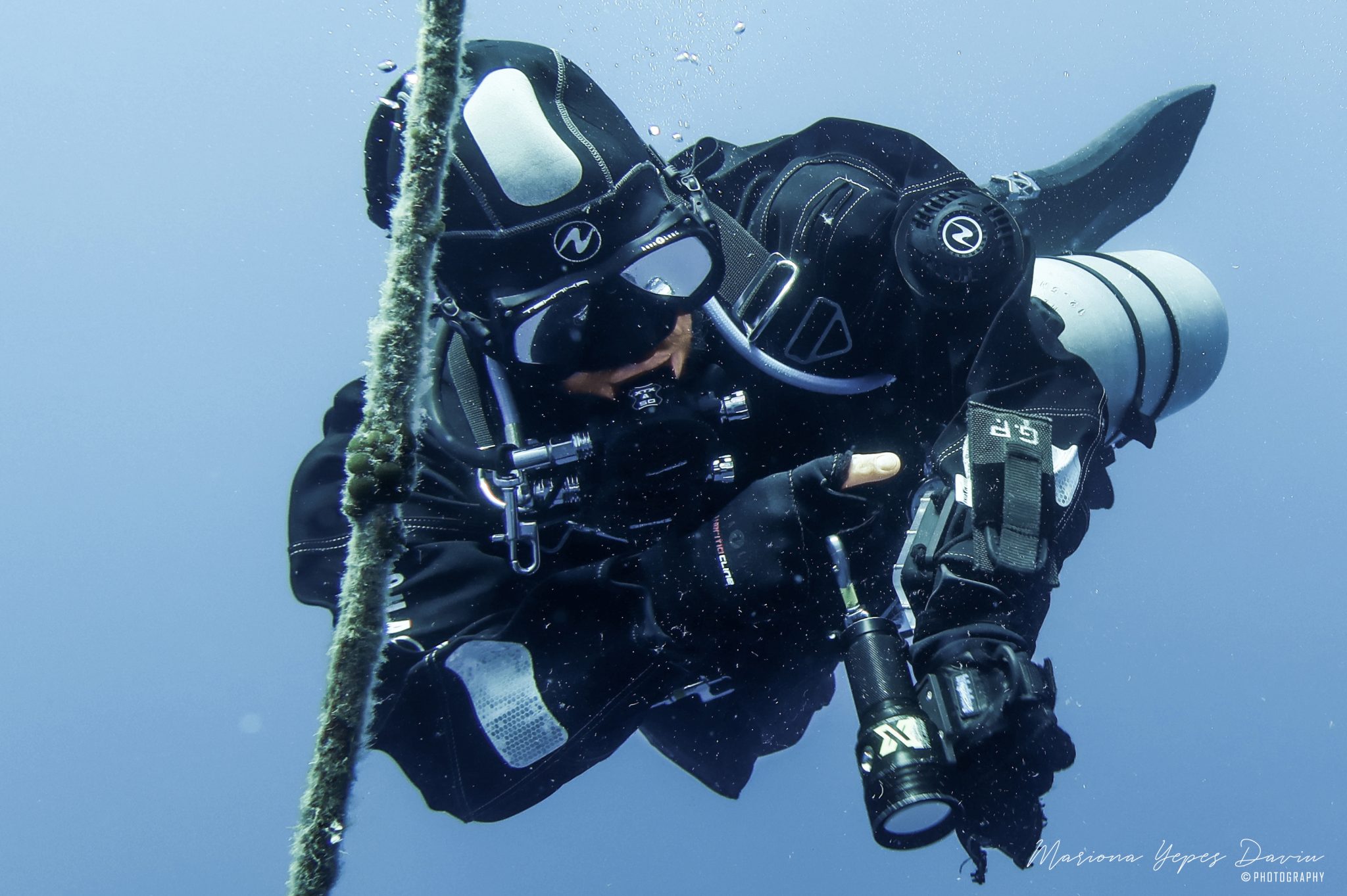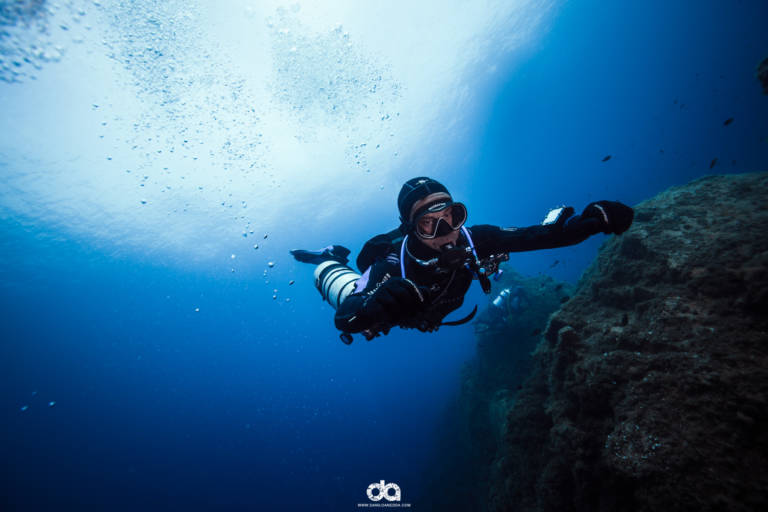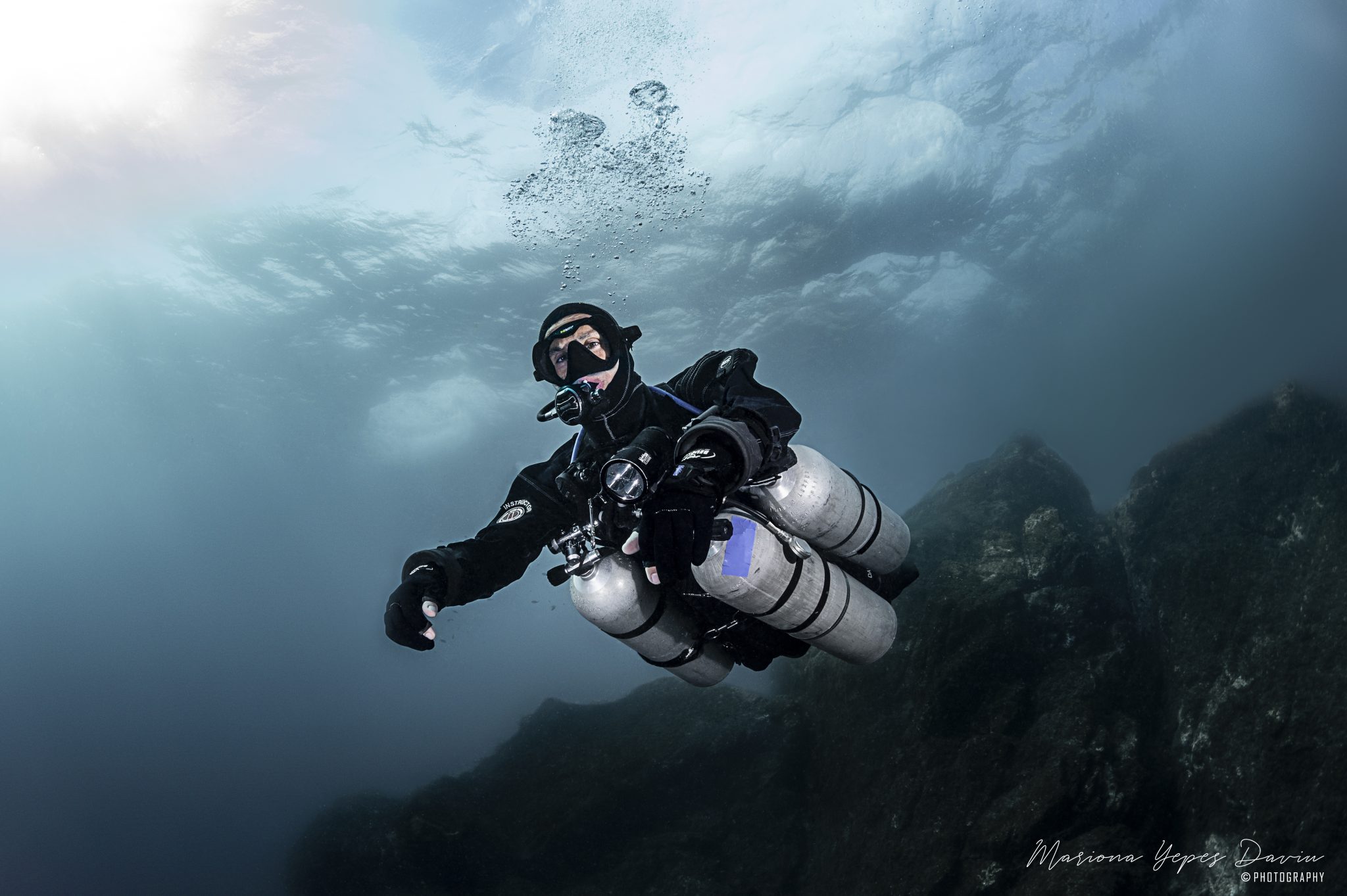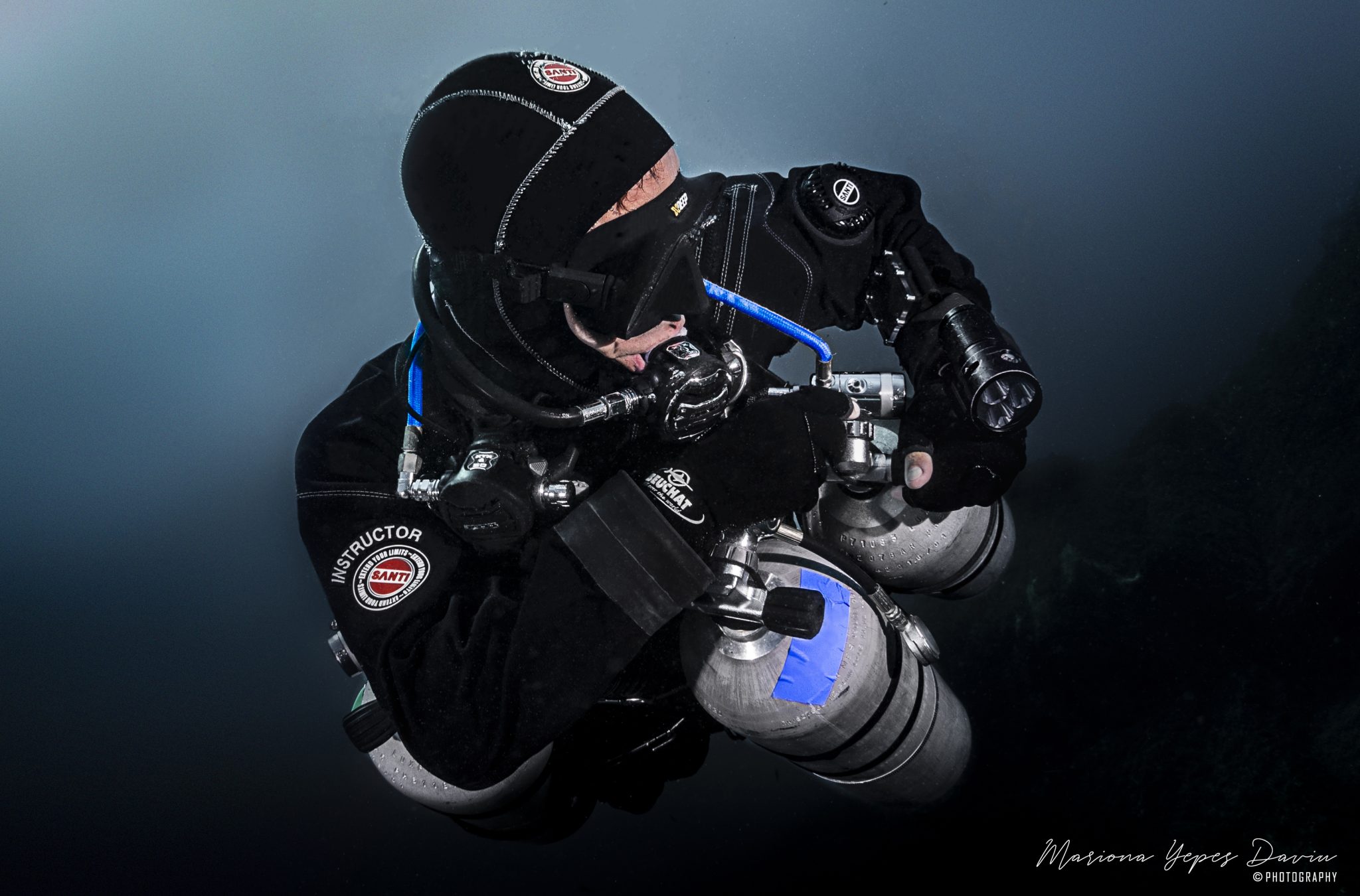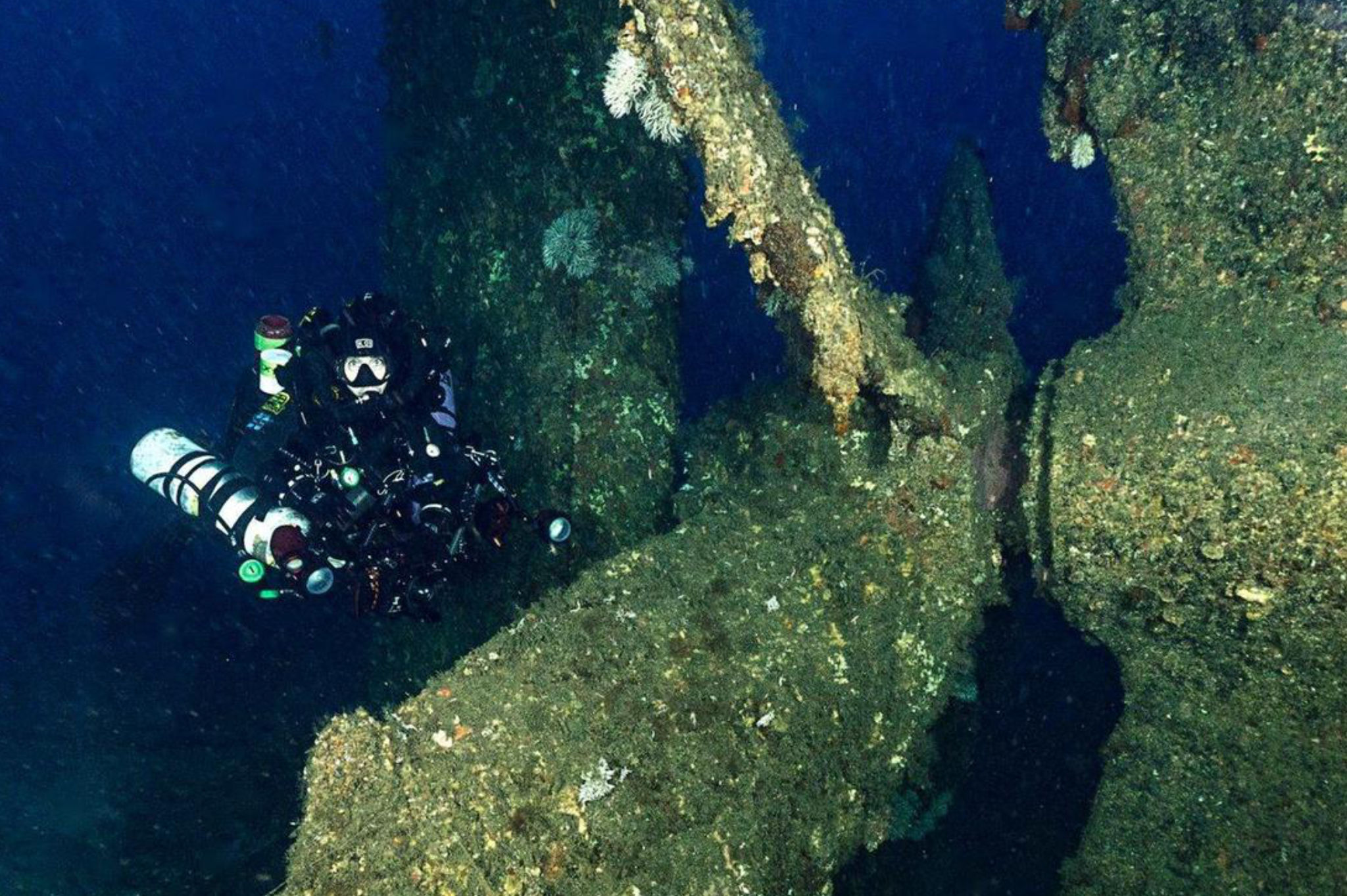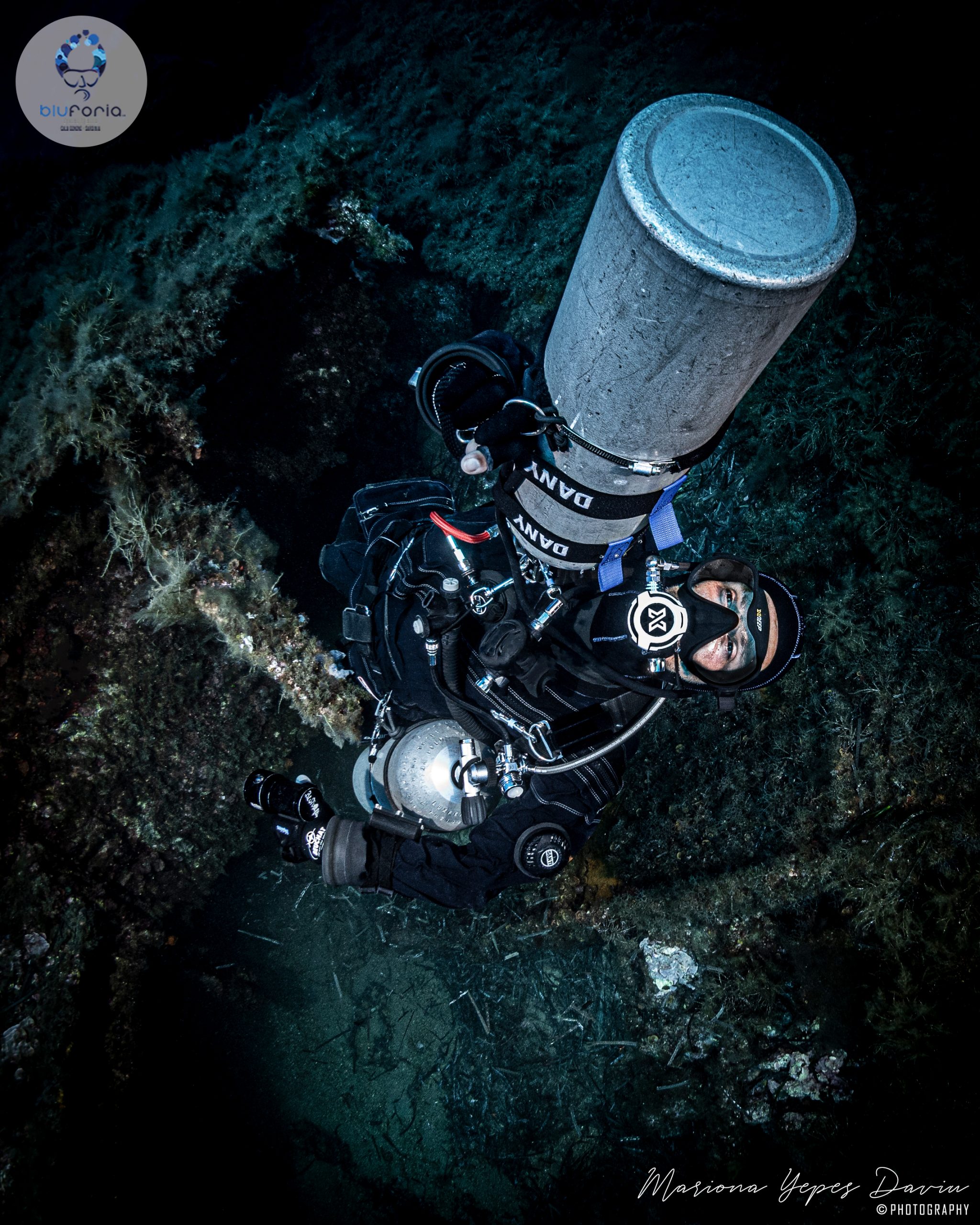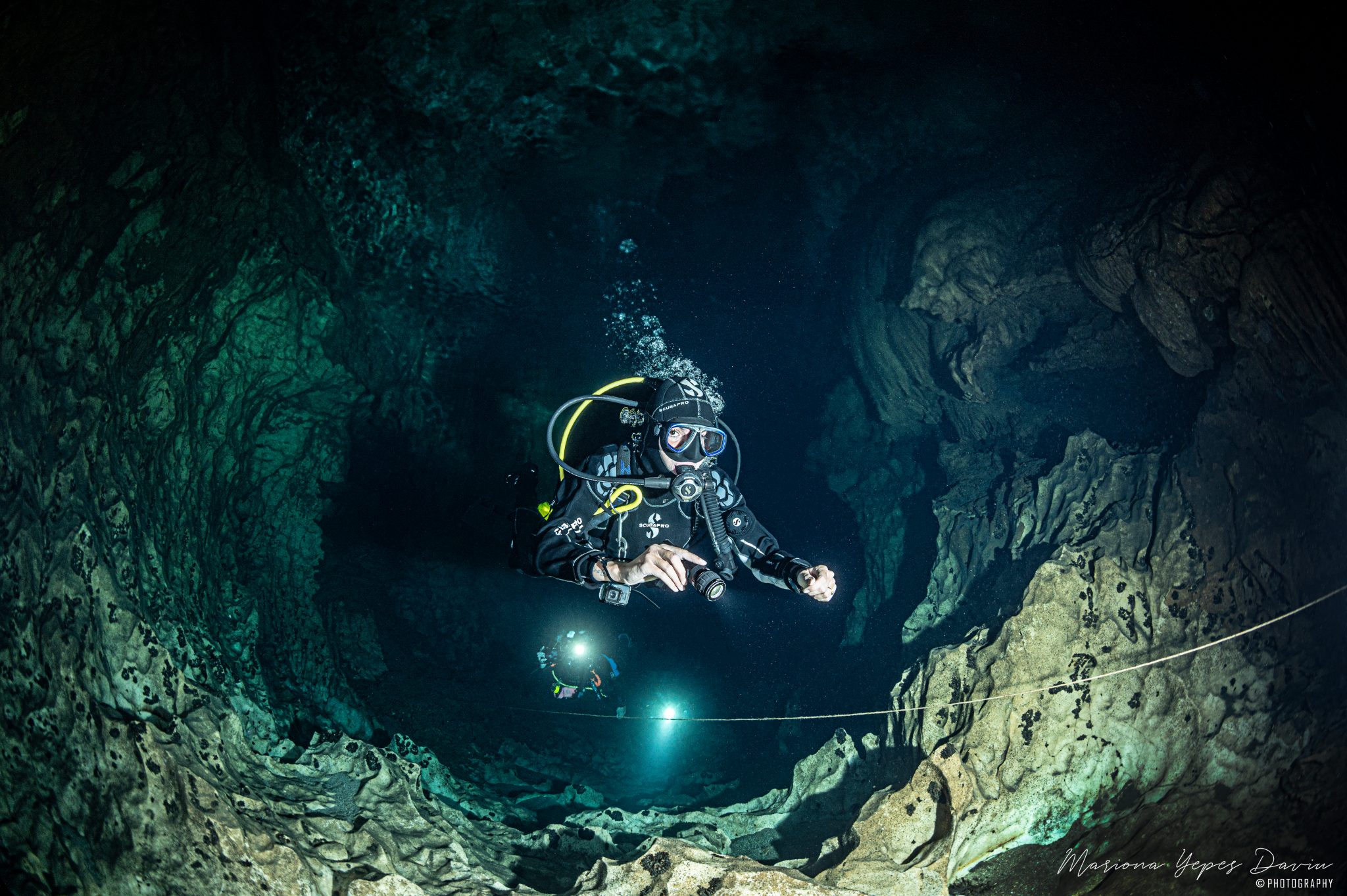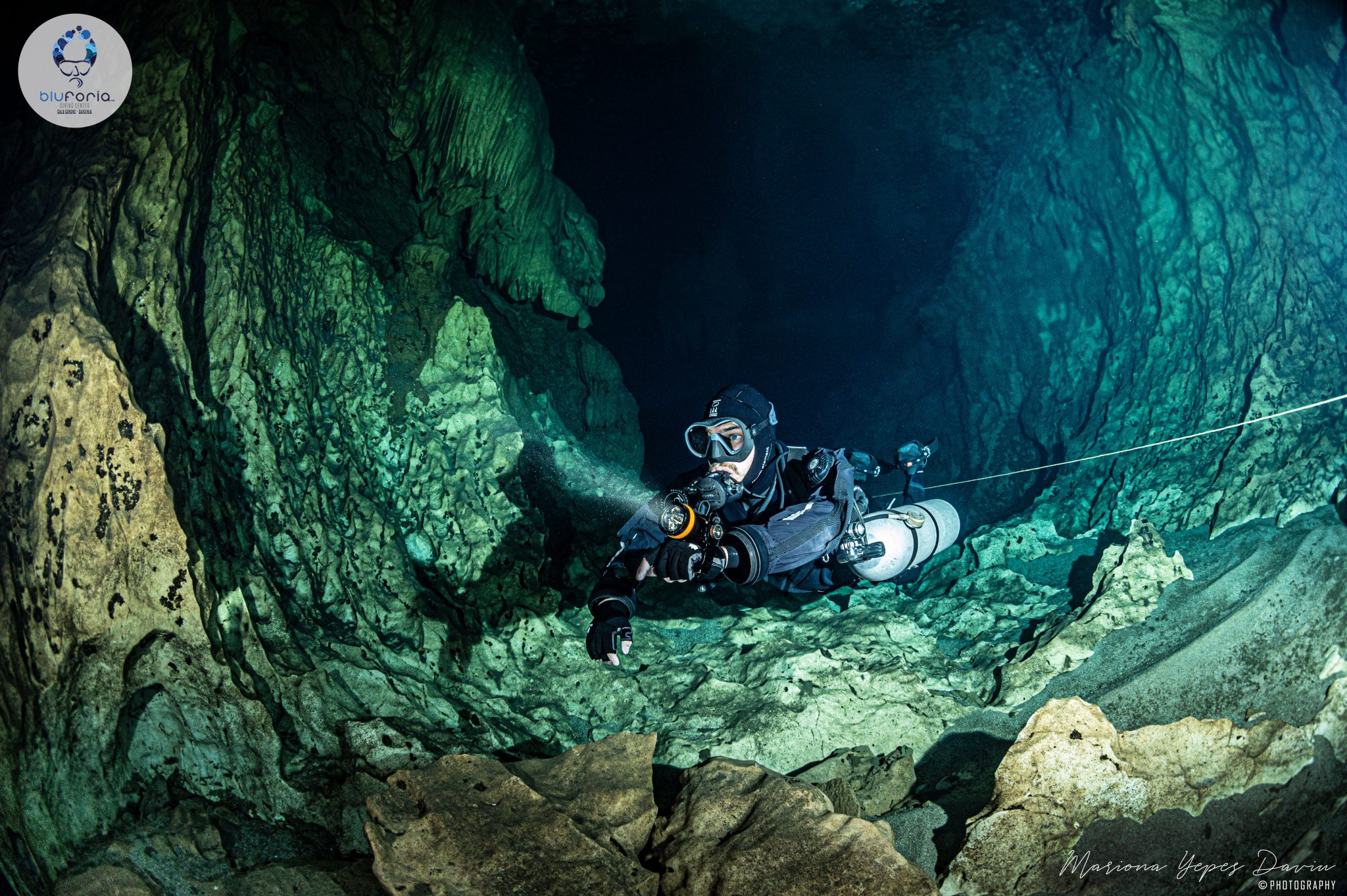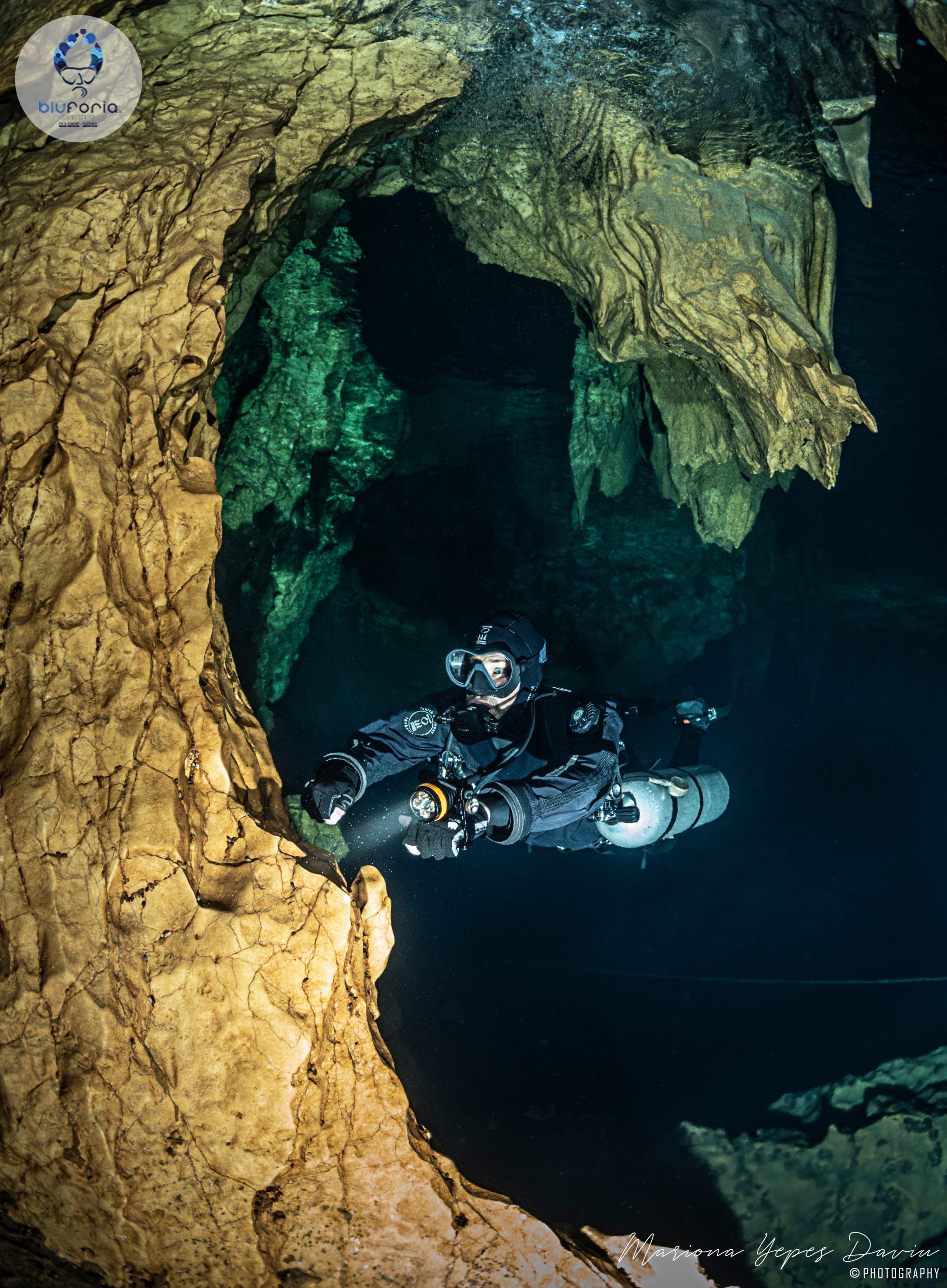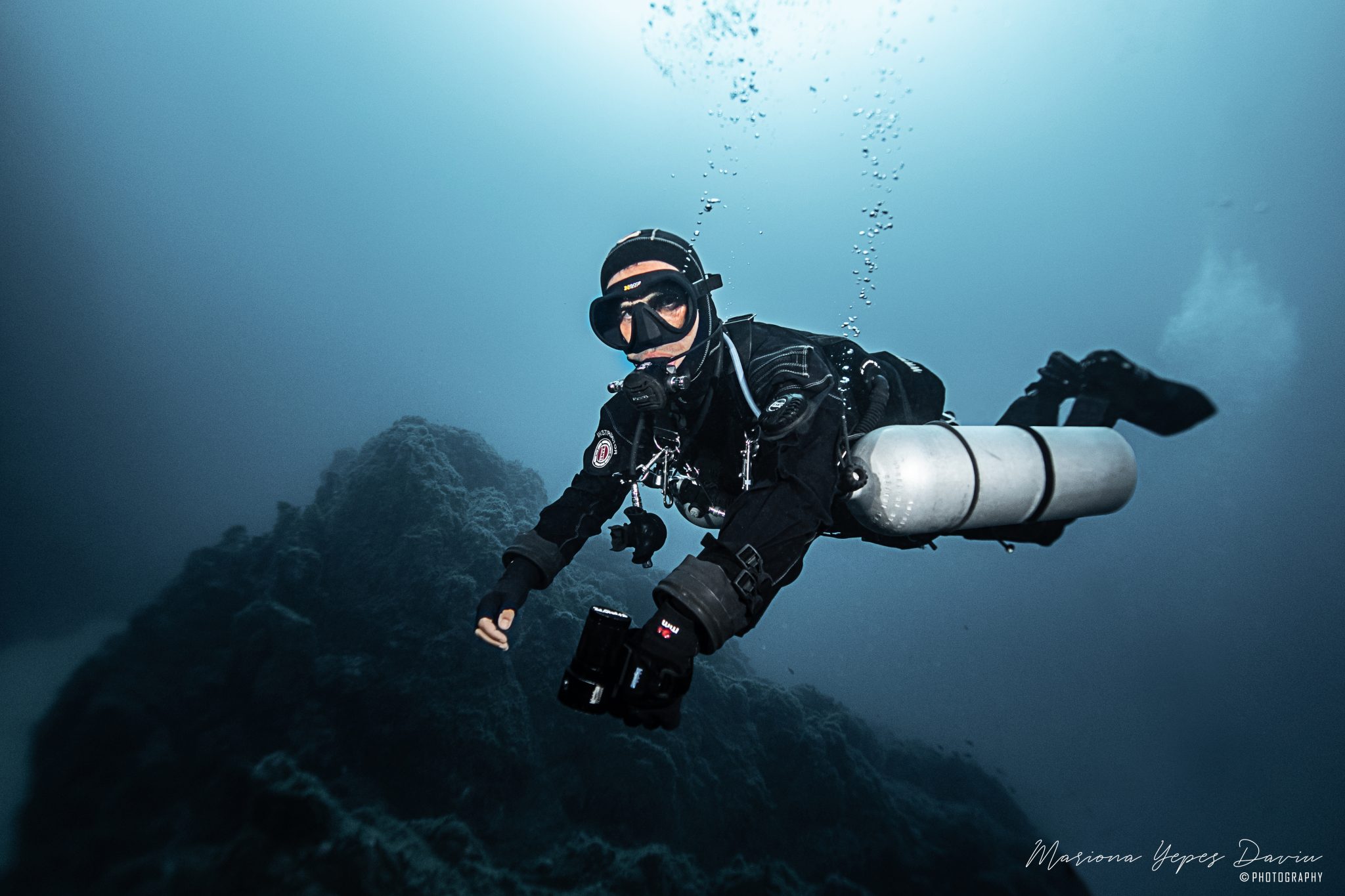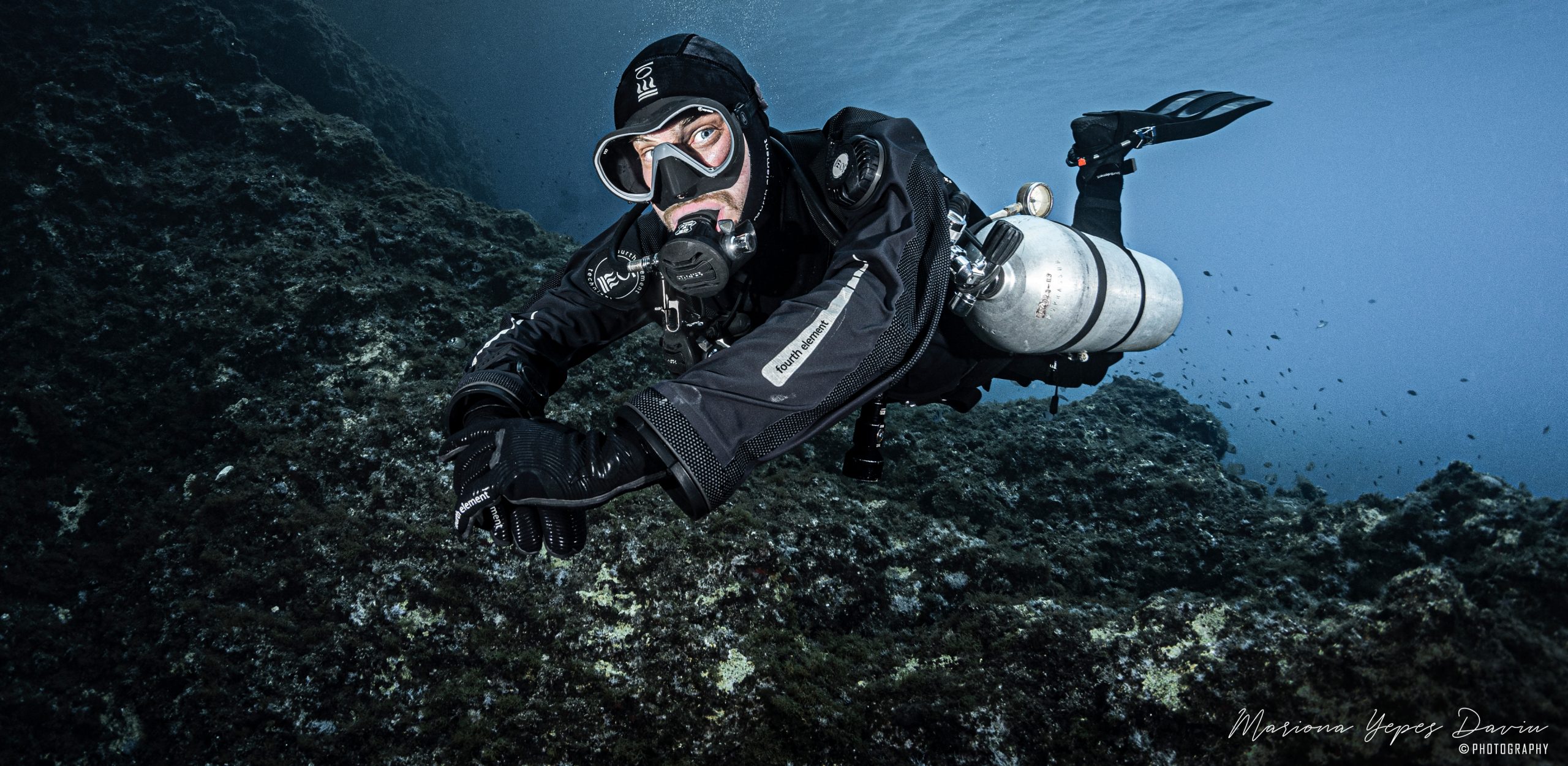
Technical Courses
Technical courses go beyond the safety limits of normal recreational diving, allowing divers to descend to much greater depths, extending dive durations, and using equipment and gas mixtures different from the classic ones.
Due to the difficulties and risks involved, these are very specific and precise courses that require serious and advanced training, as well as highly qualified instructors with extensive experience, and modern, controlled, and safe equipment.
Bluforia’s technical dives take place in the splendid marine setting of Cala Gonone, which offers a multitude of sea caves, submerged rock walls, deep canyons, and a variety of environments in which to practice and train to become a capable and professional diver.
INTRO TO TECH
The **Intro to Tech** course is perfect for divers who want to approach more complex and extreme dives. The course will teach you how to plan dives using special techniques and skills, very different from those learned during traditional dives. This course guides students through special techniques, planning procedures, and skills that differentiate technical diving from traditional sport diving. The techniques this course covers are:
* Advanced Buoyancy Control
* Finning techniques and proper body position
* Gas management
* Situation awareness
* Trim
* Equipment Choice and Configuration
Intro to Tech is the course for those who want to become better divers, regardless of whether they want to specialize in technical diving. The course can also be used as an introduction to TDI Advanced Nitrox and TDI Decompression Procedures courses. And finally, it is also a good refresh program for certified technical divers who want to refresh their skills or be re-evaluated by a TDI technical instructor.
DECOMPRESSION
This course examines the theory, methods and procedures for conducting dives with planned decompression stops. Designed as an independent course, it can also be taught with TDI Advanced Nitrox, Advanced Wreck or Extended Range courses.The objective of this course is to train divers to plan and conduct a decompression dive that does not exceed a maximum depth of forty-five (45) meters, unless it is taught in conjunction with the Extended Range Course. The necessary equipment for this type of diving, the most common configurations and decompression techniques are presented. Students are allowed to use EAN mixtures or oxygen for decompression provided that the gas mixture is within their current certification level.
ADVANCED NITROX
This course examines the use of EAN mixtures from 22 to 100% oxygen as an optimal mixture in dives to a maximum depth of 40 meters. The objective of this course is to train divers on the benefits, risks and correct procedures for using EAN mixtures from 22 to 100% oxygen for dives without mandatory decompression stops.After successful completion of this course, the diver will be able to dive using EAN mixtures from 22 to 100% oxygen.
EXTENDED RANGE DIVER
The purpose of the Technical Extended Range course is to enable the diver to plan and conduct independent dives, with double gas switches and decompression stops, up to a maximum depth of 60 meters.Upon obtaining this certification, the diver will have reached the maximum knowledge in air/nitrox diving, being able to manage up to two decompression tanks, creating tables independently and using advanced equipment and procedures.
With this certification, a high level of skill will be achieved. The diver who successfully completes the training will be able to manage complex dives while enjoying them, planning their execution with total autonomy.
HELITROX
The Helitrox course examines the theory, methods and procedures for planning decompression dives in the stationary phase using helium in the breathing mixture.The objective of this course is to train divers to plan and conduct a standard decompression dive not exceeding a maximum depth of 45 meters / 150 feet. During the Helitrox course, the most common requirements for equipment, gear configuration and decompression techniques are presented.
Students are allowed to use Enriched Air Nitrox and helium mixtures with no more than 20% helium content and up to 100% oxygen for decompression dives.
This program is designed as a standalone course or can be taught in combination with TDI Advanced Nitrox at the instructor’s discretion.
TRIMIX 60/80/100
The Trimix course line is developed to allow divers who have already gained good experience with the Extended Range course to cross the “barrier” of 50 m (164 feet), internationally recognized as the limit not to be exceeded in Air dives. It is possible to break this limit thanks to the use of ternary helium-based mixtures (Trimix) and all the related knowledge that will allow facing this type of dive, minimizing risks and enjoying the lucidity that normally is only experienced in low-depth dives.The first level (Trimix 60m – 196 feet) or Normoxic Trimix introduces the diver to the world of ternary mixtures, allowing them to use only one for the entire dive and to optimize their decompression with Nitrox and/or Oxygen. The subsequent Trimix 80m (262 feet) and Trimix 100m (328 feet) refine techniques and add competencies, teaching the use of multiple mixtures during different phases of the dive and gradually increasing the operational depth.
ADVANCED WRECK
The Advanced Wreck Diver course is the next step for any diver who has successfully completed the Wreck Diver course. During this course, you will learn the appropriate techniques to locate and plan an advanced wreck exploration dive. The course is commonly taught alongside other popular courses such as Advanced Nitrox, Decompression Procedure, Extended Range, and Trimix.
CAVERN
Freshwater spring caves, volcanic formation walls, or limestone coasts are places where divers love to venture. Cala Gonone offers the largest underwater cave and gallery system in Europe, which is why it is chosen by divers from all over the world as a spot for technical diving and as a base for **Intro to Cave** and Cavern courses.With the Cavern course, you will learn how to move comfortably in confined or large and dark spaces, potentially very dangerous. You will learn how to set up and manage special equipment for cave diving, with lighting systems and particular disorientation techniques. You will also learn how to manage distances, mixtures, and depth limits in a space that is not always easy to understand, such as underwater caves.
INTRO TO CAVE
The **Intro Cave Diver** program introduces the diver to cave diving, where there is no longer light. It is the second level of courses in overhead environments and is a prerequisite for the **CAVE DIVER** course. During the course, the diver will learn how to maneuver in an overhead environment and various critical conditions will be simulated, such as zero visibility conditions and the recovery of a lost guideline.This course is the first step for all divers who want to expand their knowledge and diving possibilities in absolutely magical places such as underwater caves.
FULL CAVE
This course represents the third phase of Overhead. Advanced techniques for cave dive planning, practical execution in various types of cave systems and scenarios are developed. The objective of this course is to improve the previous skills acquired in the Cavern and Intro to Cave programs. Emphasis is placed on dive planning, emergency management, and skill refinement.
SIDEMOUNT
Having scuba tanks on your back is not a requirement for exploring the underwater world: there is indeed an alternative configuration called Side mount, which involves diving techniques using two tanks aligned, one on each side of the diver.The advantages of diving with a sidemount configuration are numerous: you have double the gas mixture, you gain more flexibility, and your back is greatly relieved. During the course, you will learn how to correctly assemble and configure the equipment, how to arrange and adjust weights to always be perfectly balanced, and how to respond correctly to potential problems during the dive.
GAS BLENDER
Technical diving is growing rapidly, becoming popular. This is why the number of divers requesting precise air and gas mixtures has increased. The Tec Gas Blender course teaches you to mix enriched air nitrox and helium-mix gases using one or more mixing methods. Creating air and gas mixtures is a new profession, essential for those working in a Diving Center and allows you to expand your range of diving courses, reaching the most complex levels of technical diving.
ADVANCED GAS BLENDER
Trains students to create **Nitrox/Trimix mixtures**. The objective of this course is to train candidates in the correct techniques, equipment, and precautions for mixing Nitrox/Trimix for underwater use.

